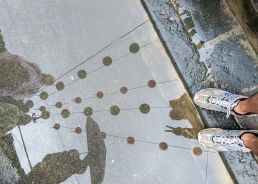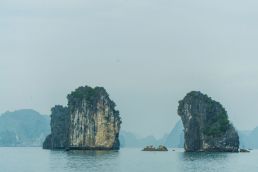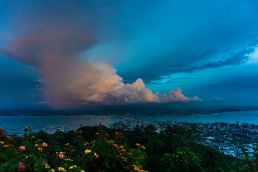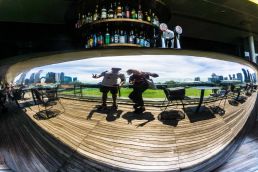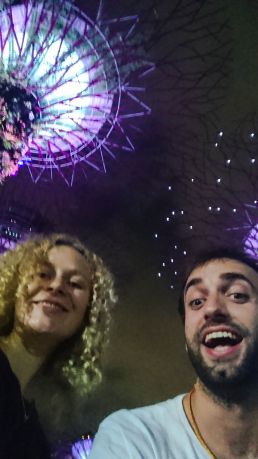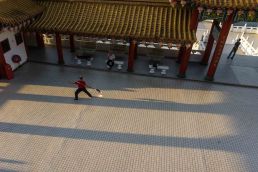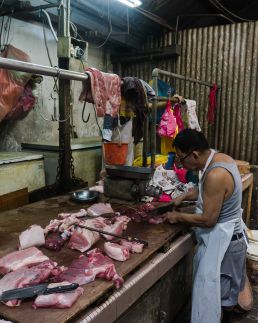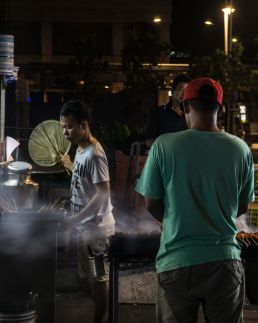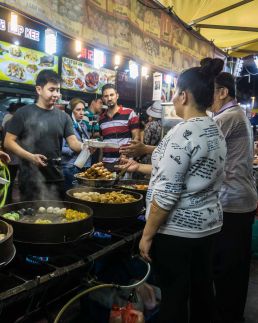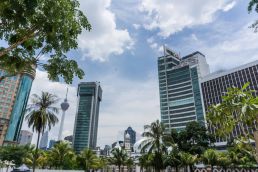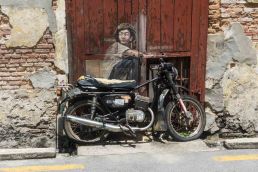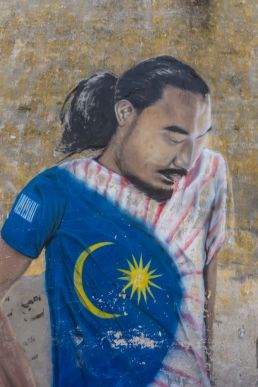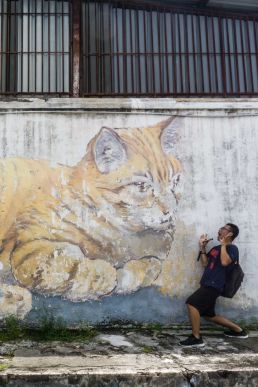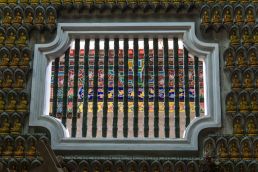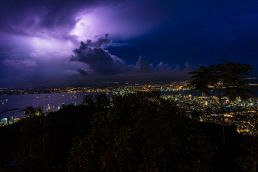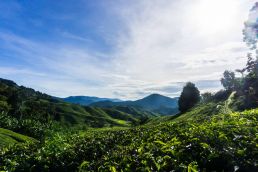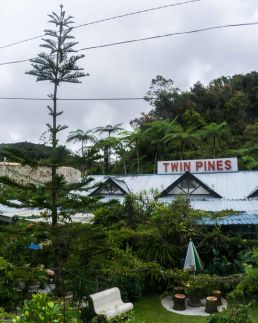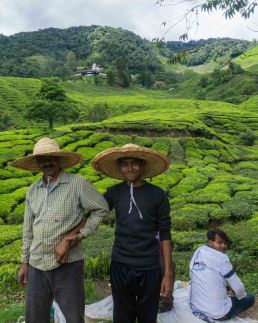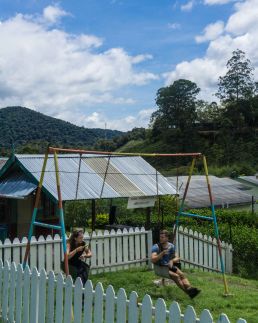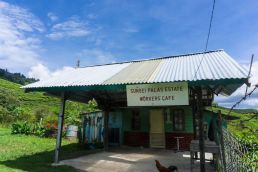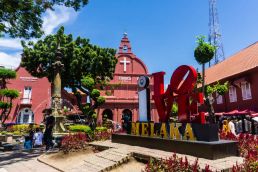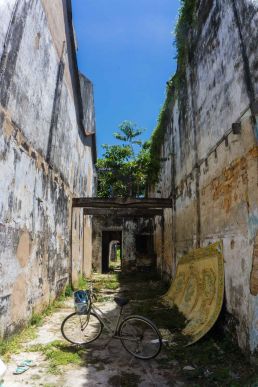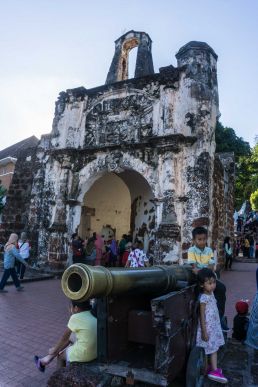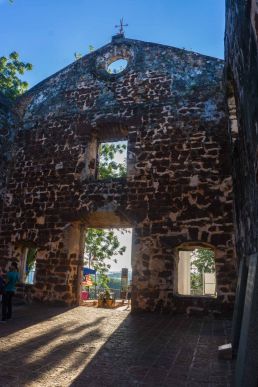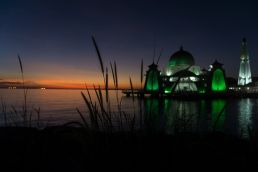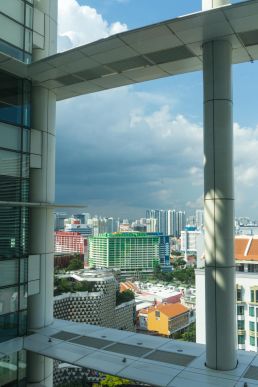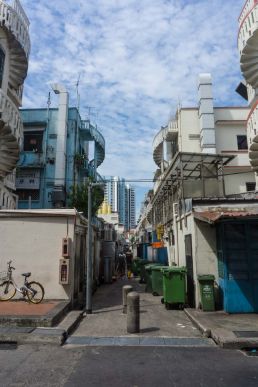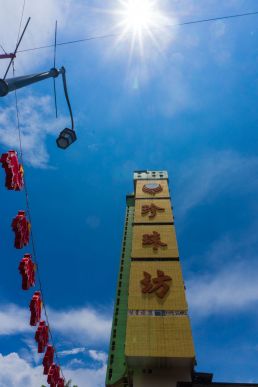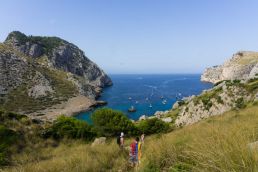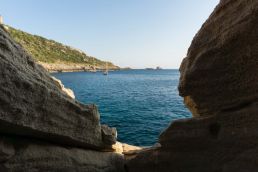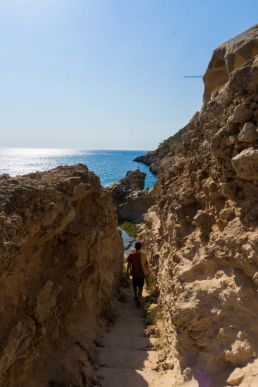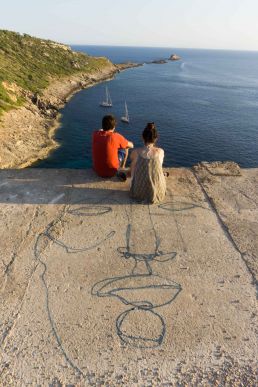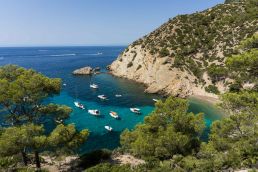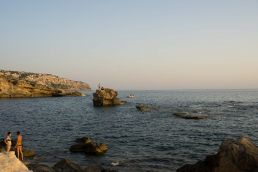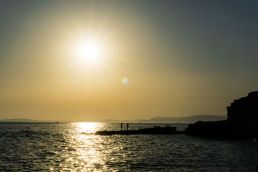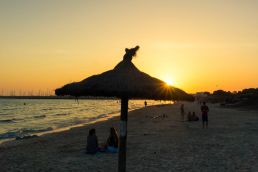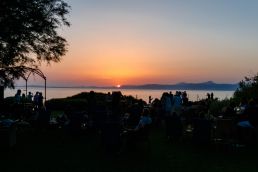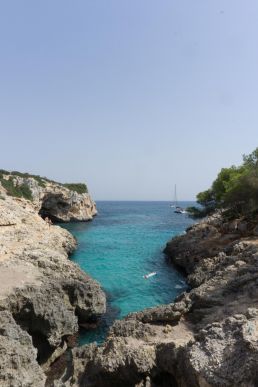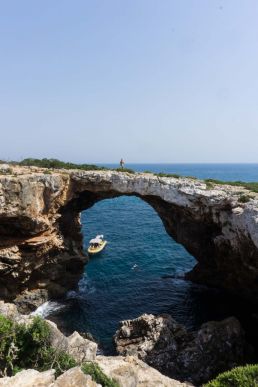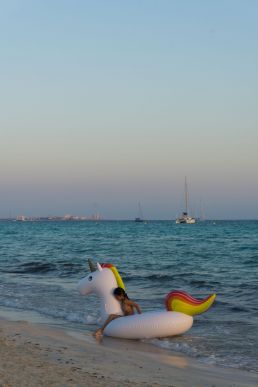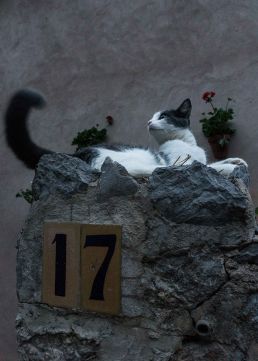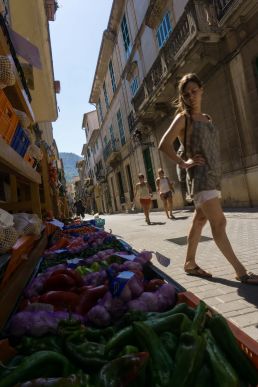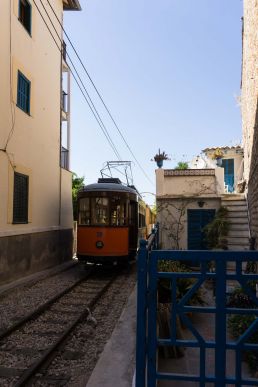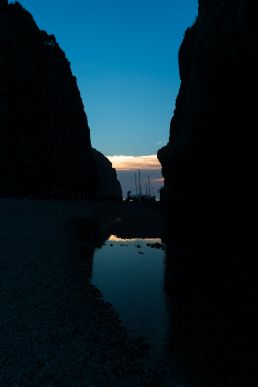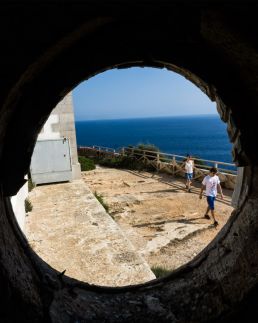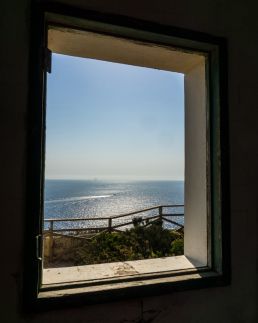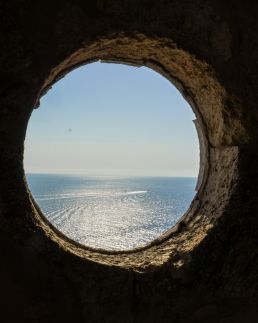Bad weather is a state of mind
Bad weather is something we humans have made up. It’s a bad way to start the day, giving clouds, strong winds or rain an unnecessary negative connotation. Normally, bad weather is thrown out there for anything that isn’t sunshine and a warm breeze.
This bad weather measurement is specially emphasized while travelling or during weekends and holidays. This is why summer exists and almost everyone squeezes their long vacations during this period. But when defining bad weather we forget about so many things.
Sure, nobody wants to spend two weeks under soaking rain, missing one sunset after another. That is, however, a rare thing. Bad weather is part of the natural cycle, it’s part of who we are and why we are here. Without bad weather we would be living in a desert. Our crops wouldn’t grow, our land couldn’t be rich and green and wonderful.
Instead of bad weather, we should be thinking about what the weather actually is: rain can be nice, it can cool a hellish day in Southeast Asia or, in the form of snow, announce a good skiing day in the Alps. Why hate the cold? Isn’t it nice to wear a fuzzy sweater and lit up a bonfire, isn’t cool to play in a thick layer of snow?
Bad weather, sometimes, will even give you some extra holidays because you can’t actually leave the house or commute to work. Bad weather is the one that unfortunately kills human beings and destroys natural wonders, and normally this kind of extreme weather falls under the category of a natural disaster. But still, this is something that escapes our control.
When travelling, a lot of people can’t stand a single drop of rain. Without that rain, though, they couldn’t enjoy those white sand beaches and crystal clear waters. Without rain they couldn’t explore jungles and forests. Rain is a source of life, and we’re the ones living it.
We should be thanking bad weather, embrace it and just think that a rainy day is a rainy day, as good and valid as a sunny day. Hot, warm or windy, all conditions allow us to do different stuff. Staying home, or having some intimate time in an improvised shelter with a complete stranger might be more enjoyable than a routine ‘good weather’ day.
So, whenever you’re travelling or want to visit a country, don’t get too tied up because of the colour of the sky or the mercury sign in the thermometer. If I just moved around according to that I’ve would have missed the beauties of Bali –it was rainy season, yet it didn’t rain for a single day– or the awesomeness of Ireland’s ice cold winter. Sometimes you need a week of dark skies to appreciate that very first clear sunrise on your trip.
This is what exactly happened the past week in Vietnam. The central area was flooded because of the rain, and although at times it felt like too much, looking backwards from my new shiny and red hot retreat in Mui Ne, the rains of Ninh Binh, Hue and Hoi An didn’t look so bad. They were refreshing and a part of my trip, they allowed me to meet awesome partners and enjoy longer coffee breaks, books, art galleries and surf sessions under the rain.
The best solution for bad weather is to stop defining it as such a thing. Then it will feel better.
P.S. Oh, and this ‘bad weather’ thing allowed me to write this digression while listening to Bad Decisions, from Two Door Cinema Club, in loop. It’s not so easy to get off time while travelling, so rain can ease them into your plans.
Hong Kong and the capitalist extravaganza
Hong Kong has the same population as my region –or country, since it’s Catalonia and probably you all know a bit about that… That is 7,5 million and a huge difference: Hong Kong has a tenth of the territory compared to my land. This means a density of population of 6.5 thousand inhabitants per km2, the fourth higher for any country in the world.
We also have to remember, though, that Hong Kong is in truth a part of the Republic of China. To land in the city is to land in the far eastern alter-ego of Manhattan, NY. Skyscrapers everywhere, but of course with an obvious Asian flare. The one and a half hour ride from the Airport to the city center promises an enormous hub of surprises for the traveller.
Communism takes a nap
Again, the fun part is to reflect on the fact that you are in China, probably the most illustrious communist stronghold –with Cuba– that remains in the 21st century. Communism, as Hong Kong proves, is just a sort of capitalist branding now, an appeal, but not a reality. A skyline like New York and an economic system that has produced some of the biggest banks in the world, this small but towering place proves who has won ‘the battle’.
Neon lights and crowded shops, the Hong Kongese love each and every one of the capitalist treats. A coffee in Starbucks, the latest designs of Gucci and the special edition of the Jordan I. The Nike lab in Wan Chai, for instance, had a whole block of line with people even sleeping in the street trying to get the first ballots –not the actual product– to be eligible to buy it in the first place. This is crazy but normal in here. In only four days I saw three of these humongous lines: either for fashion items or videogames, it didn’t really matter.
Shopping and spending, and eating all kinds of delicious food –fancy or not, in this case– are the main pass times of the locals. And thus, even the tourists like me feel the vibe and end up getting on the line. I couldn’t resist buying a new lens. Damn it, I’ll blame it on the mass effect. Even though all this could be taking aback the nature lovers and the idealists that still live in our world, Hong Kong is still a marvellous place to be.
The many islands that comprehend it’s small territory have enough space for this cosmopolitan frenzy but also encompass beautiful peaks, awesome natural trails and beaches to surf or suntan (if the pollution and the fog allow it). The international vibe has made HK a great foodie destination, and the city hosts the cheapest Michelin star restaurant in the whole world: a Dim Sum that’ll bring you to heaven. The weather is fairly nice for Southeast Asia, and to sum it up there’s one thing that Hong Kong is not: boring.
Tip: Although it’s a ‘small’ territory, Hong Kong has a weeks worth of entertainment for most tourists, and rushing a visit for two or three days won’t feel like enough for most people. A good idea is to stay for 5-7 days to slow down a bit and actually enjoy the little corners in the city. For longer holidays, Hong Kong is a good preview to mainland China. Cheap flights, Visa agencies and also a Western-Eastern mixture to soften the entrance.
First connection
Travelling alone is great for many reasons. The first one kicks in really early on your trip. It could even be on the plane towards your destination or, more usually, in the first place you stay. This applies, of course, to backpacking experiences. You get to the hostel –don’t try ‘boring’ hotels for socialising– and you realise that you’re by yourself.
Who’s sleeping over me? What language are those two speaking? When will I meet him or her? Wait, meet who? I’m talking about the one person that will be your first connection in your adventure. In Thailand, where I proved to myself that travelling alone is just fine, this moment arrived in a bar near Khao San Road during the second day of my trip. But now I’m talking about my current RTW adventure, so let’s get back to it.
It was on the second day again. She was wearing a NASA t-shirt and sat between two german girls and a dutch guy I met the day before. I thought she was with the girls, since she was german and Mitch, the dutch guy, told me she was travelling with them. He got his facts wrong, though.
As usual, everyone in the terrace of the hostel just chit-chatted a bit. “Where are you from? What’s your name? How long are you travelling for? What are you doing next? And blablabla. Don’t get me wrong, these conversations are good and necessary too. In a couple of days you might get to meet ten or more people, but only one will really stick with you for the rest of your travels.
Her
Freya, blonde curly hair and deep blue eyes. She’s the one first constant of my trip. It’s weird but I’m telling you the honest true. When I left for Malaysia, after two long days wandering around Singapore with her, I felt a bit sad. In only 48 hours I established a connection that I hope can remain for the rest of my life. And I don’t even know how it happened.
We just talked about everything and nothing, and kept talking for hours. In her I saw a perfect travel companion, although I knew we’d part ways really soon. Perfect strangers, we didn’t get bored even for a minute. Or if we did, we did so together. In one of those cravings of life, we realised that she was the answer to one of those first questions. “Where are you staying?” She was sleeping right over me. We laughed at it, of course.
It was really late when we all got introduced –that’s Freya, me and the rest of the hostel guests– more or less to ourselves, so we headed to bed. The next morning, Freya and I decided to go to the Muslim Quarter together. Then we got to Chinatown and one of its marvellous food courts. Nothing special really happened, yet we both knew without knowing. I was her first connection and she was mine at the same time, otherwise it wouldn’t work.
After parting ways on that first day, we spent the next 24 hours together doing nothing yet doing everything. That night, the one before saying goodbye, we had a lovely gathering with travellers from England, India, Germany and Kazakhstan –Kazakhstan, wow, I’d never expected that– and I remember just leaving her behind at some point in the night, immersed in another conversation. I was abducted by this Kazak guy and his stories. We were drinking beers kindly given to us by our English mate and sipping expensive whisky thanks to a couple of awesome Indian guys.
I looked up and she stared right back at me. It was very powerful. She smiled. I smiled. How wonderful it all was. And then I thought ‘I don’t really know her, but I can already see through her eyes’.
Freya and I share our experiences almost now on a daily basis, and she’s an important part of this trip that I’ve just started. Oh, and we will hopefully reunite in some remote, beautiful spot around Asia.
And why have I decided to talk about this? Well I don’t know, but I realized after meeting her that what happened with Raquel in Thailand just happened again here. Not sure if two times qualify, but this first connection thing is something you’ll only feel once you travel by yourself. It’s a wonderful feeling, so you should try.
This is the first post of Guille’s RTW travel journal, where he will share insight on backpacking and life whilst travelling around the world. You can follow his adventure in our magazine and his Instagram account.
Malaysia, the hidden gem in Asia
When I bought my plane ticket to Malaysia it wasn’t really in my plans. It was a sweet surprise, because I leave the country after two weeks of amazing landscapes, great culture and delicious food. To be honest, Malaysia never popped into my mind as a tourist friendly country, and yet it that’s exactly what it is.
Actually, Malaysia seems to be the next step for a perfect introduction to South East Asia. After Singapore, which compared to Kuala Lumpur seems just another European capital, the cities of Malaysia are the perfect destination to get fully used to the Asian way of living.
That is: heat, always heat. And rain, you never know when it will come. But it’s ok, you’ll sweat so much that rain isn’t actually going to make you wet. Malaysia has everything to offer: tropical islands, tiny cultural hotspots, incredible mountains, the jungle and a busy capital such as KL.
KL, chaos and diversity
Let’s begin with KL, because the truth is that, although it’s a great city, it’s not as enjoyable as Singapore, which is really close if you open the world atlas. Anyway, my judgement might be unfair because I had enough of concrete jungles after one week in Singapore. The Petronas towers are nice and packed with locals and tourists, but this city is really enjoyable from the rooftops with a cold beer. I went to a place called Heli Bar (where Helicopters actually land), and you should do it too. Also, if you stay for a few days, a visit to the Batu Caves is well worth it (you can there by Metro)
To be fair, KL has a lot to offer, but just be sure to have some space in between conurbations. Again, in Malaysia’s capital you’ll find a peaceful and satisfying mix of cultures –although that will introduce you to all Asia, as a continent, has to offer.
Hipster coffees and street art
What I really loved about Malaysia was the first stint in Penang and Cameron Highlands. The first is one of the cultural cities in the northern regions. It actually has an International Airport, so I skipped KL to begin with. Penang has everything to offer from street art to natural wonders. One day you’re enjoying art galleries and the next one you’re walking 2 hours into the jungle to find a stranded beach on the other side of the island.
Let’s just leave it in here: you’ll wanna stay a bit more in Penang. And something I didn’t do, Langkawi is pretty close by and you can get by ferry. Apparently it’s worth it.
High on tea
Sweating all day long is just the thing in SEA. So that’s why Malaysia is perfect for a break from the heat. A five hours bus ride from Penang and you’re in the middle of the country (the western part of it) and almost 2000 feet high. The cool breeze is just amazing. It’s not really cold, but it’s chilly enough after the usual 30 some degrees and humidity. The tea plantations, which are beautiful by themselves, combined with the jungle treks, are just a feast for the senses. This is, by far, a must stop during your trip through Malaysia, just as the one coming right up.
Portuguese, Dutch and English, all in one
Melaka is far south western Malaysia, but only two hours away from its busy capital. It’s again a hotspot for hipster coffee shops and art galleries. The city, though, it’s more beautiful by itself if we compare it to Penang. The main reason is history: this was once the epicenter of a powerful sultanate. Then it was a Portuguese colony, and then the Dutch came in, and then the Brits… and finally, after a short period of Japanese occupation, Melaka became a city of the newly founded Malaysia.
The good thing is that, all that occupation, actually left an imprint in the city that you can visit today. Colourful colonial buildings merge perfectly with Chinese themed houses and just a bit of local tourism massification. You’ll notice that when you see a horde of anime-themed bikes that pump up ‘Despacito’ (yes, you even listen this song here) with their loudspeakers. That’s one of the locals favourite pastime.
You’ll get used to it. And you’ll fall in love with Malaysia because it’s beautiful, cheap and, most importantly, people is so nice to each other.
Singapore, the true gateway to Asia
My gate to the world has been Singapore. Why? It’s simple. It was the cheapest route to get to South East Asia, a 250€ flight with Norwegian from London. I thought the price was bonkers. As many things in life, Singapore came into my life by chance. It could have been Bangkok or Jakarta, for all I know. I just browsed Barcelona to anywhere, and the airplane tracker sent me to this awesome city.
I think Singapore is an unfairly disregarded destination for most people. It’s just a tiny country, a city encapsulated on an island just under Malaysia. There are, though, many interesting things to do and see in the city.
First of all, it’s important to notice that everything your eyes will see has been built over the last 50 years. The Singapore we know today was established in 1965 after Malaysia decided they didn’t need that useless piece of land in the tip of continental Asia. Well, if you come here now you’ll see they’ve proved them wrong. Singapore is one of the four Asian Tigers, and probably the friendliest country for occidental expats.
As a result of its short modern history and their meteoric rise in the global markets, Singapore’s skyline doesn’t fall short to others like New York, London or Hong Kong. What this means, really, is that Singapore is the perfect gateway to Asia and its culture. You still get all the perks of home (if home for you is any European or American city) mixed up with three major Asian cultures: Chinese, Malay and Indian.
A week in Singapore
The results are astonishing and that’s why nobody should simply discard visiting the country. The basic sightseeing can be done in three days, but a week in the city has more than enough attractions to keep the visitor busy.
Because of the merging cultures, Singapore’s food offer is unlimited and you can enjoy it in the numerous food courts spreaded round town. These are great for the appetite and good for your pocket, since the city is probably one of the most expensive in all Asia. Still, you can travel on a budget and enjoy numerous free attractions such as the lights shows in Marina Bay and Gardens by the bay. The city has also great green spaces like the Botanical Gardens, ideal for a morning walk to escape the skyscrapers.
A visit to the city’s neighbourhoods will take you to Little India, China Town and Kampong Glam, the muslim and hipster quarter (yep, sounds weird, but it’s awesome). You could rush those three days or spend a week, but you surely won’t get bored either way.
[Learn more in our Singapore travel guide]
Ah, and I almost forgot. Singapore’s airport is the main hub of the region and thus, flies the cheapest fares for all your ‘other-side-of-the-world’ destinations. Try it and you won’t regret it.
Singapore might not be a full vacation destination, but it’s a good place to start and then continue.
Tips: Ideal for architecture lovers. On extremely rainy days, there are plenty of museums and malls to entertain all your necessities.
Mallorca, horizons of the dream
More will you understand as words bring you closer to the bank of the river of yourself, and without fear you face with your fluent reality (…)
Drown, then, everything that moves you away from the project of you, and accept all the lonesomeness and shortage without concerns.
Take love as a norm that frees you from fears and anxieties and clears you the horizons of the dream.
Miquel Martí i Pol, catalan poet and writer.
The lines above were written in a simple yet beautiful tile hanging up in the wall of Joan and Pepita’s kitchen. They hosted me and Dani (his grandson) in Palma de Mallorca for a few days. Queralt, Dani’s girlfriend, also joined us for the trip.
My thoughts about Mallorca were defective. I found out just one day after landing in Palma. For us –catalans, I’m from Barcelona– the Balearic Islands are a place of mass tourism which we see more as a southern extension of Germany, Russia and England. The archetypical idea is that whatever beauty left in the island has been devoured by the claws of tourism.
This trip was a bit different, luckily. I was visiting Mallorca with a local, who happens to be one of my best friends at home. His family came from this island and so, the legacy of unspoiled places and secret spots has permeated through the years. I was the family’s lucky guest of honour.
So first things first. Common sense will prevent you from going to Magaluf, Palmanova and other massified towns. The cool spots are tiny in the maps but giant in real life.
A great filter for tourists are the long walks to the beach. The longer the walk, the lesser the guiris. It makes sense. Go to small coves, rocky beaches and steep mountains to forget that, yeah sure, the tourists are all around, but not precisely there. You won’t see them off the beaten track.
Although Dani had a few ideas, we carried on by pointing the map with our finger and driving to whatever place we thought would be beautiful. We did fuck up a couple of times, but those days in Mallorca were just a feast of sun, relax and brilliant gastronomy.
Lucky me, Dani’s granparents event treated me with the best fresh products of the land: sobrassada, ensaimadas and black bread. Just be sure to try them out. But let me finish here, because words can’t describe better than pictures, at least in this case.


